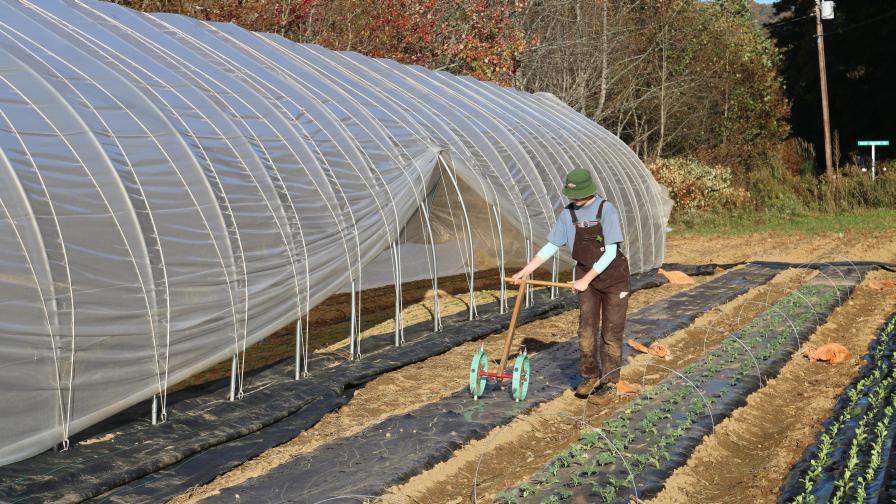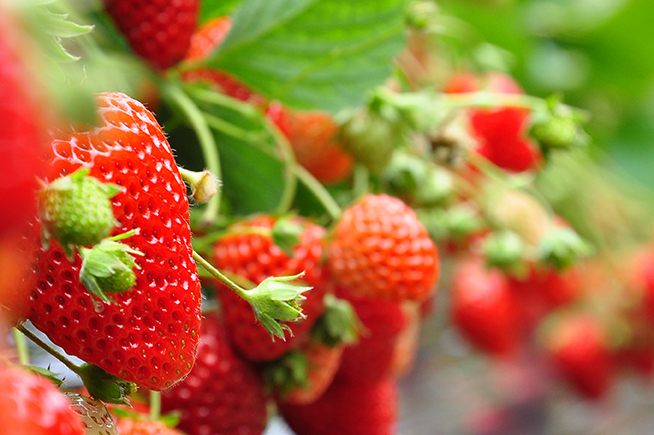Profitable Vegetable Crops for a Small Farm
I’m a small-scale farmer, and both my land and my delivery van are limited in size. Because of this, it’s important that I consider the space it takes to grow, deliver, and store crops when I’m selecting which to prioritize. The most profitable crops for my scale of farming are compact, quick growing, and high yielding. In addition to the dozens of varieties of vegetables I grow, herbs fit this profile and have proven to be an important part of my farm’s financial success.
To illustrate the importance of herbs in my crop lineup, consider this: 24 kale packed in a 1.8 bushel box sell for $96 retail or $42 wholesale in my area. In that same volume, I can fit a minimum of 50 bunches of parsley and 50 bunches of dill, which sell for $300 retail or $200 wholesale.
This matters on a small farm because what we can sell is partially determined by how much product we can fit in our van, our walk-in coolers, and on our tables at market.
Over the past two decades, I’ve grown sage, rosemary, lavender, comfrey, thyme, oregano, anise hyssop, mint, basil, cilantro, dill, and parsley. While all the herbs bring variety to the market booth, four stand out as herbs that grow quickly, sell best, and are the most profitable for us.
Basil
In recent years, plant breeding has made huge breakthroughs to create downy mildew resistant varieties of basil that grow well both outdoors and indoors. Last year I grew ‘Prospera Italian Large Leaf DMR’ and ‘Prospera DMR’. This year I’m excited to try ‘Noga Prospera Active DMR’, also produced by Genesis Seeds.
In addition to selecting these disease resistant varieties, we treat our basil weekly with Regalia (Marrone Bio Innovations) to give it further protection from disease. To extend our basil harvest, I also grow several beds of our basil indoors. Planting two 100-foot beds inside yields 80 to 100 bunches of basil harvested weekly consistently for four months.
To prevent basil from wilting post-harvest, we harvest it with at least 6-inch stems and band five to eight stems together. We place the bottom 1 inch of the stems into water, as we would small flower bouquets. This keeps the basil fresh and perky.
We recommend customers give the basil a clip at home and continue to place the stem ends in water. Customers often return to tell us their basil stayed vibrant for weeks using this method.
Parsley
We seed parsley in mid-February each year, and we plant it out into the field eight to 10 weeks later. Parsley is a workhorse for us. It’s the first herb we put in the fields at the beginning of April, and those very same plants give us parsley through October. We plant just two 150-foot beds and we harvest 100 to 200 bunches per week through the season.
Because parsley is a long-term crop for us, we plant it on landscape fabric to suppress weeds and to help to retain the moisture we provide through our drip tape irrigation. We consistently sell parsley at our tailgate markets, and it’s the most popular herb we offer chefs as well. We successfully grow the variety, ‘Giant of Italy’, year after year.

Ivy Creek Family Farm is a fan of the Two Bad Cats Dibbler, which helps prep the bed for lettuce and cilantro at one time.
Photo by Carol Miller
Cilantro
Customers who love herbs typically want to purchase them week after week. And so our herb sales are best when we consistently stock the products. That means customers come to us before looking for the herbs from other growers.
To achieve continual harvests with cilantro, we seed and plant 50 bed-feet of the herb every two to three weeks. No matter the variety we select, cilantro bolts quickly and provides just two quality cuttings from each planting. We plant cilantro on the same rotation as our lettuce, often in a bed with small lettuce heads that share the same plant spacing of four-row, 6 inches. This pairing decreases the complexity of bed prep since we can use our Two Bad Cats Dibbler to prep the entire bed at one time with the same setting on the tool. We grow both ‘Calypso’ and ‘Cruiser’ cilantro with success.
Dill
Dill is one of our most profitable crops because we sell all parts of the plant. We bunch the leaves and stems for culinary herbs; we use the flowers in our bouquets; and we also sell the blooms to chefs as edible flowers.
Our most successful successions of dill happen early and late in the season, in the spring and fall. We seed and transplant one full 100-foot bed of the herb in late April, late May, and late August. During hotter months, when dill doesn’t thrive as well, we plant just 50 bed-feet of dill in June and July.
This ensures we have consistency at market during our peak cucumber months but doesn’t risk too much if those later plantings are not vigorous.
If we have space in our tunnels, we plant dill inside in mid-September for late fall sales. Dill will grow well in the field in the fall, too, under a row cover. But because a row cover is time consuming to manage when it’s used outside, I’ve transitioned to using tunnels rather than an outside row cover and hoops for season extension.
In the early spring, we harvest each dill plant three to four times for culinary dill and then once the plant bolts, we harvest the flowers for our mixed bouquets or culinary blooms. The only variety of dill that has met our needs for both high quality culinary and floral dill is ‘Bouquet’.










